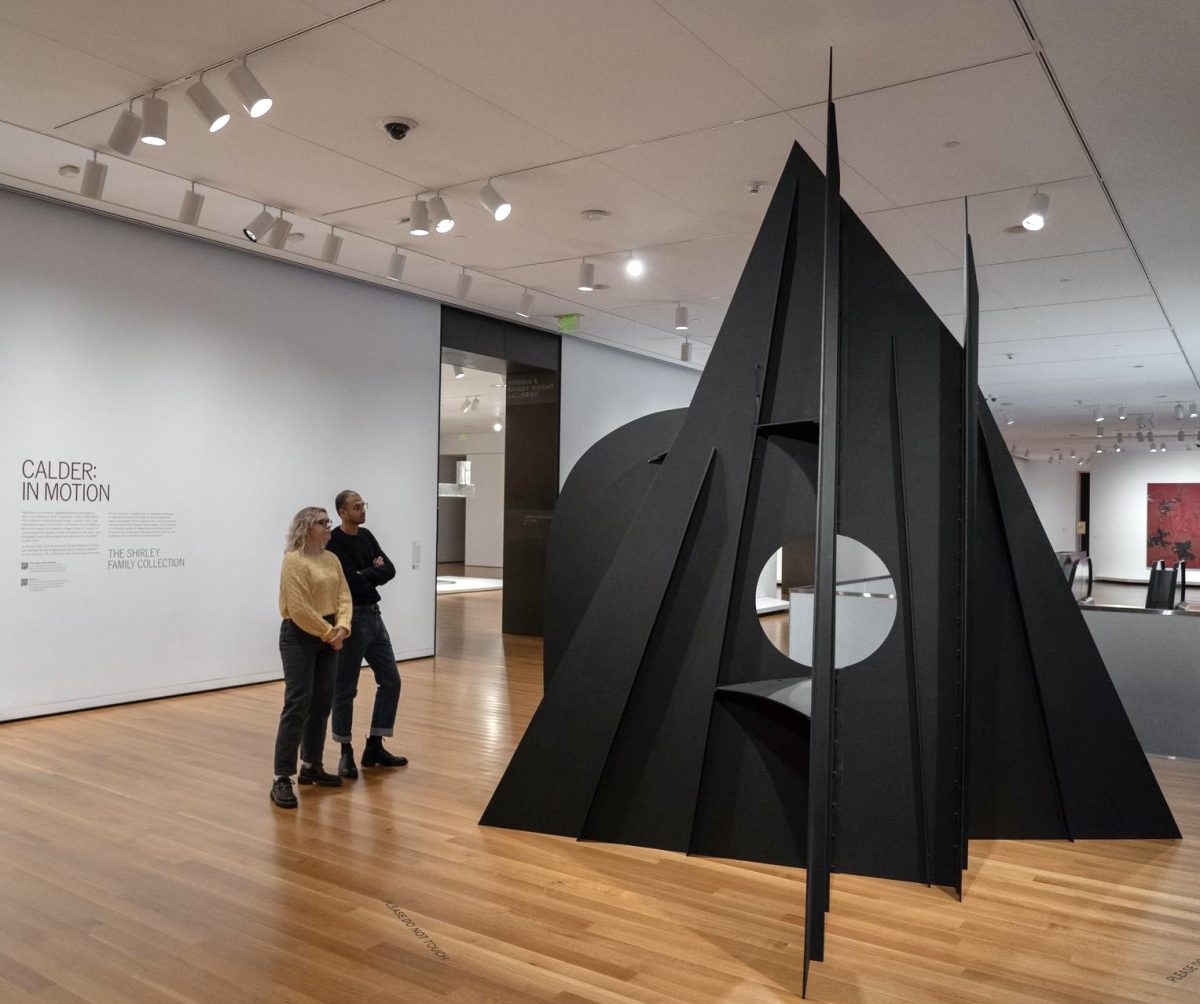Calder Smartphone Tour: Mountains (1:5 Intermediate Maquette)

In 1975, Alexander Calder was commissioned to create a monumental sculpture for the nine-story atrium of the Hart Senate Office Building in Washington, DC. The result, Mountains and Clouds, is a towering two-part composition that stands 51 feet tall.
Mountains (1:5 Intermediate Maquette), the first artwork visitors encounter in Calder: In Motion, The Shirley Family Collection at SAM, is a scale model—referred to as a maquette—of the stabile portion of Calder’s colossal sculpture. The artist began creating intermediate maquettes in the mid-1960s as part of the process of scaling up his colossal sculptures “to study the overlapping of the plates and the piercing of the holes.”
In November of the following year—just under a month after the opening of his highly-applauded retrospective at the Whitney Museum of American Art—the artist traveled to Washington, DC to finalize the details of the project with the architect. That evening, Calder returned to New York City, where he unexpectedly died of a heart attack. The artist’s death led to several delays in the commission’s completion with the final installation eventually taking place in 1986. Today, the stabile portion of Mountains and Clouds remains on view in the Hart Senate Building while the mobile undergoes restoration.
As a stationary work accompanied by a hanging mobile, Mountains and Clouds is the only composition of its kind that Calder created. Learn more about Mountains (1:5 Intermediate Maquette) and the sculpture it is paired with in SAM’s galleries, Femme Assise (1929), in the second stop on the free smartphone tour of Calder: In Motion. Browse all sixteen stops in the tour via our SoundCloud or by scanning the QR code next to select artworks in the exhibition.
Mountains (1:5 Intermediate Maquette), 1976
NARRATOR: In his later years, Calder focused primarily on large-scale public works. And of course, you can see one such work—The Eagle—here in Seattle in the museum’s Olympic Sculpture Park.
You’re looking at Mountains, a model for the “stabile” component of Calder’s massive 51-foot high work, Mountains and Clouds. A “stabile” is a stationary sculpture, in contrast to Calder’s moving sculptures, called “mobiles.” In the monumental work, the stabile is paired with a mobile, which hovers above it.
Calder made the full-sized sculpture for the Hart Senate Building in Washington, DC. It was one of his last projects before his death in 1976. The sculpture is made from sheet metal—one of Calder’s most favored materials.
KENNEDY YANKO: Metal is one of the most fascinating materials in the world. You know, it’s something that we are excavating from the ground. It’s coming from the earth…
NARRATOR: Kennedy Yanko is a painter and sculptor who works with metal.
KENNEDY YANKO: …and it carries what it’s known and what it’s experienced. It’s this amazing material that goes from a hard state to a liquid; and my relationship to this heavy, typically connoted as an industrial material is quite interesting because I watch it break like a twig. It actually becomes something that’s delicate to me.
NARRATOR: This late work is paired here with one of Calder’s earliest works, a wooden sculpture called Femme Assise, from 1929.
ALEXANDER S. C. ROWER: I think that’s really informative and quite interesting to have them together: you get a sense of a trajectory.
NARRATOR: Alexander S. C. Rower is President of the Calder Foundation, and the grandson of the artist.
ALEXANDER S. C. ROWER: And also, you get a sense of really the 20th century in terms of aesthetics, just in these two objects.
– Lily Hansen, SAM Marketing Content Creator
Image: Installation view of Calder: In Motion, The Shirley Family Collection, Seattle Art Museum, 2023, © 2024 Calder Foundation, New York / Artists Rights Society (ARS), New York, photo: Chloe Collyer.